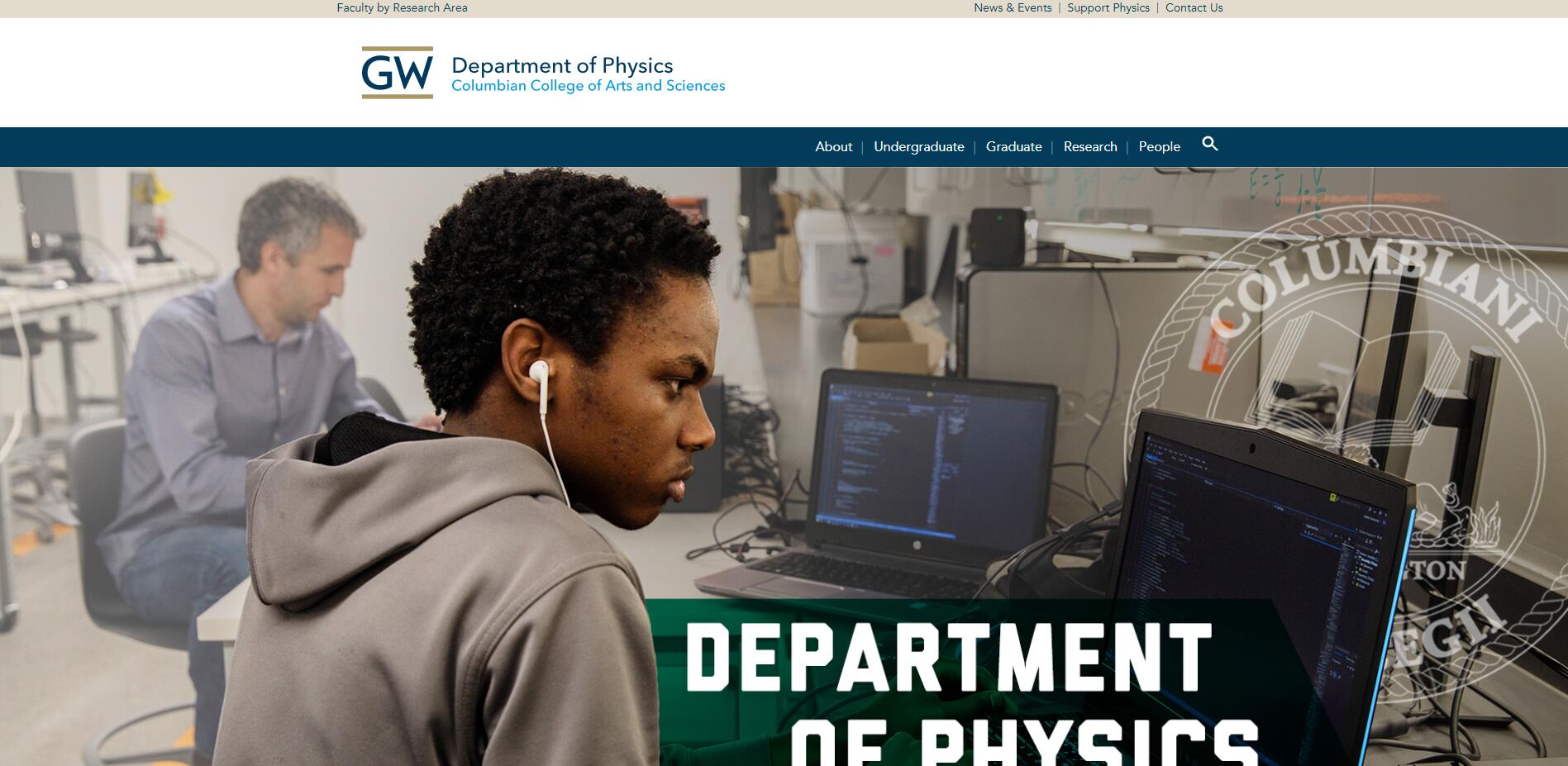On TopSchoolsintheUSA.com, you can learn what the top-ranked physics colleges and universities are in Washington DC, and compare the best physics colleges, and get the latest ranking of best schools for physics in Washington DC. From the following table, please see full list of top 3 graduate schools of physics in Washington DC including school information and contact profile.

| RANKING | GRADUATE PHYSICS |
| 1 | George Washington University, Department of Physics Address: 725 21st Street NW, Washington, DC 20052 Phone: (202) 994-6481 Email: chenz@gwu.edu Website: http://www.phys.gwu.edu |
| 2 | Catholic University of America, Department of Physics Address: 200 Hannan Hall , Washington, DC 20064 Phone: (202) 319-5315 Email: cua-adm-phys@cua.edu Website: http://physics.cua.edu |
| 3 | Howard University, Department of Physics and Astronomy Address: 2355 Sixth Street NW, Washington, DC 20059 Phone: (202) 806-6245 Email: hugsadmission@howard.edu Website: http://www.physics1.howard.edu |
District of Columbia
The city of Washington and the District of Columbia are governed by a mayor and city council. However, the US Congress has the power to override any decision by Washington’s local authorities. The people of Washington have their own delegate in the House of Representatives of Congress, but without the right to vote; The District of Columbia is not represented in the Senate. In general, residents of Washington have fewer rights in the US political system than residents of any of the states (for example, in local government); because of this, proposals were repeatedly put forward to grant the District of Columbia statehood (or at least the delegation of the corresponding rights), but they were all rejected by Congress.
Washington is the twentieth largest city in the United States, with a population of over 700,000. The population density in Washington is about 4,400 people / km 2.
The District of Columbia is part of the Washington-Arlington-Alexandria metropolitan area, whose population exceeds 6,250,000 people. This huge city, which stretches far beyond the metropolitan area into Virginia, ranks sixth on the list of US metropolitan areas.
The racial composition of the population of Washington, D.C.:
- Whites – about 45.6%
- Blacks (African Americans) – about 46.4%
- Asians – about 4.4%
- Native Americans – less than 1%
- Two or more races – about 2.8%
- Hispanic or Latino (of any race) – about 11%
- Non-Hispanic whites – about 37%
The largest ethnic groups among the population of Washington are African Americans, Salvadorans, Mexicans, Guatemalans, Irish, Greeks, Germans, Jews, Poles, Italians.
Among the residents of the American capital, the majority are adherents of Christianity (about 65%, including 41% – Protestants, 23% – Catholics, 2% – Mormons and 1% – Orthodox), about a quarter of the city’s population call themselves atheists or agnostics, about five percent profess Judaism, about one percent are adherents of Islam.
Washington DC is one of the few “planned” cities in the world, that is, originally built according to a single (albeit changed many times over time) plan of cities in the world.
The plan of the future US capital was developed by the order of the first US President George Washington by architect Pierre Lanfant in 1791. Later, it was this project, although modified by Andrew Ellicott, that served as the basis for the construction of the city.
Langfang suggested that the building of the “house of Congress ” be erected as the center of the future capital (now the majestic US Capitol rises on this site). The White House, the residence of the President of the United States, is also built exactly where Langfang saw it. He also envisioned the creation of a “Grand Avenue” in the downtown area, today known as the National Mall (National Mall). In general, the project not only proposed an “orderly” city layout, but also provided for the laying of wide avenues and the creation of spacious parks.
